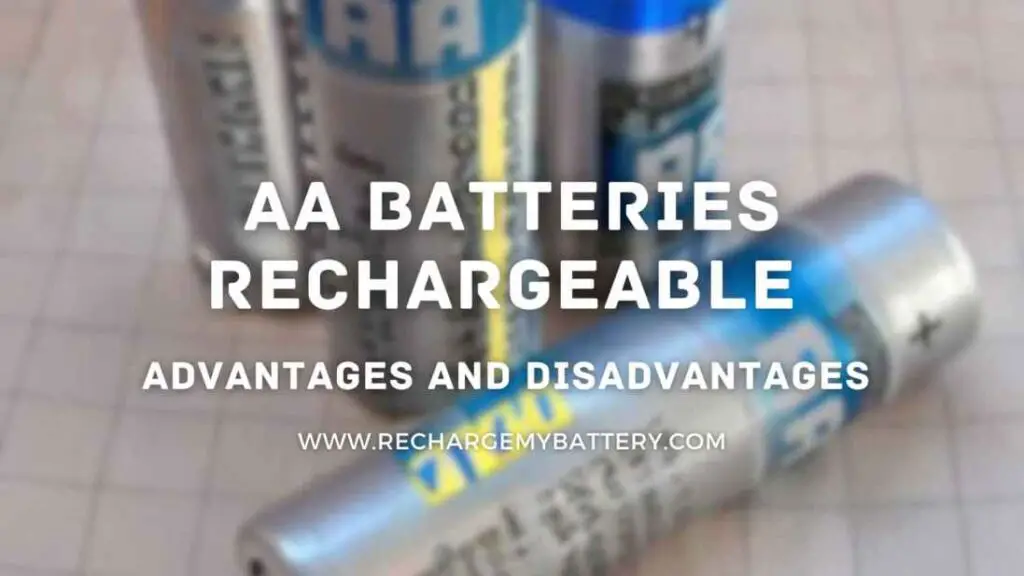When it comes to powering hearing aids, the choice between disposable and rechargeable batteries is an important decision. Every hearing aid requires batteries, but the type varies—some use disposable batteries that need regular replacement, while others come with rechargeable batteries that can be used repeatedly. This decision can be highly personal, and influenced by factors such as lifestyle, convenience, and cost.
Both disposable and rechargeable hearing aid batteries have their own advantages and drawbacks. In this guide, we’ll explore the key differences between these two options, helping you determine which type of hearing aid battery best suits your needs, budget, and preferences. As technology advances, the popularity of rechargeable hearing aids is on the rise, but some may still prefer the reliability and ease of use offered by disposable batteries.
What is a Disposable Battery-Powered Hearing Aid?
Disposable battery-powered hearing aids use small, removable zinc-air or button cell batteries that power the electronic components, including the microphone, receiver, and internal processing parts. These batteries need to be replaced regularly, with the frequency depending on the hearing aid model and usage. Disposable batteries were the standard power source for hearing aids for many years before the rise in popularity of rechargeable options.
Disposable hearing aid batteries are recyclable and still widely available, making them a convenient choice for users. They come in various sizes and are color-coded for easy identification. These batteries last anywhere from 10 to 16 days and can be quickly replaced when they run out, without requiring any maintenance beyond proper disposal.
Rechargeable hearing aids have become a popular, eco-friendly, and cost-efficient option due to advancements in technology. For example, a binaural hearing aid user would use approximately 300 disposable batteries in three years, costing $300-400, while a rechargeable hearing aid user would only need about six rechargeable batteries in the same period, costing $100-200. Additionally, rechargeable batteries eliminate the need to handle tightly-sealed battery packages, which can be challenging for older adults, and some models offer convenient charging options like portable battery-powered chargers.
What is a Rechargeable Hearing Aid?
Rechargeable hearing aids use built-in lithium-ion batteries that do not need to be replaced. Instead of replacing batteries, users place the hearing aids into a recharging dock or station to power them up, similar to how you would charge a cell phone or tablet. Once charged, the hearing aids can be used again without the need for frequent battery changes.
These hearing aids are becoming increasingly popular due to their convenience and long-term cost savings. Rechargeable batteries can be recharged up to 500 times, which reduces the need for frequent purchases and is more environmentally friendly. However, rechargeable batteries typically have a shorter battery life per charge compared to disposable batteries, requiring more frequent charging throughout the day.
Rechargeable hearing aids are ideal for users with limited hand mobility since inserting the device into a charger is generally easier than handling small disposable batteries. They also offer better protection against environmental factors like dust and moisture due to their airtight design. While rechargeable options may not be suitable for all cases, particularly for those with profound hearing loss needing more power, they are a more sustainable and user-friendly choice for many.
Pros and Cons of Disposable Battery-Powered Hearing Aids
Pros:
- Wide Availability: Disposable hearing aid batteries are readily available in various sizes at most retail locations and pharmacies. Their widespread availability ensures that users can easily find replacements when needed.
- Lower Cost: Disposable batteries generally come at a lower initial cost compared to rechargeable options. This makes them a budget-friendly choice for those who are looking for an affordable entry into hearing aid usage.
Cons:
- Batteries Must Be Replaced Frequently: Disposable batteries typically last only a few days to a couple of weeks, depending on usage and hearing aid model. This frequent replacement requirement can be inconvenient and time-consuming.
- Small Batteries Can Be Hard to Handle: For individuals with dexterity issues or limited vision, handling and replacing tiny disposable batteries can be challenging. This can make the maintenance of hearing aids more difficult and frustrating.
Pros and Cons of Rechargeable Hearing Aids
Pros:
- Longer Lifespan: Rechargeable hearing aid batteries, often lithium-ion, can be used for up to 500 recharges, providing a significantly longer lifespan compared to disposable batteries. This reduces the frequency of battery changes and can simplify the maintenance routine.
- Better Value: While the upfront cost of rechargeable hearing aids is higher, the long-term savings are considerable. The need for frequent battery replacements is eliminated, which can result in substantial cost savings over time.
- Easier to Use: Rechargeable hearing aids are more user-friendly for those with limited dexterity or vision. Users only need to place their hearing aids in a charging unit each night, avoiding the hassle of handling and inserting small batteries.
- Environmentally Friendly: Rechargeable batteries are more sustainable as they reduce waste. Unlike disposable batteries that contribute to landfill pollution and contain toxic chemicals like mercury, rechargeable options minimize environmental impact.
- Safer for Children: Since rechargeable hearing aids do not use small batteries, there is less risk of accidental ingestion by children or pets, making them a safer choice for households with young children or animals.
Cons:
- Can Take Time to Charge: Rechargeable batteries typically require several hours to reach a full charge. This can be inconvenient if users forget to charge their devices overnight or if they experience a power outage.
- Might Cost More Upfront: The initial investment for rechargeable hearing aids is usually higher than that for disposable battery-operated models. This includes the cost of the charging unit, which may not be included in the price of the hearing aids themselves.
- Battery May Need to Be Replaced Over Time: Although rechargeable batteries have a long lifespan, they eventually degrade and may need replacement. Users cannot replace these batteries themselves and will need to send the hearing aids back to the manufacturer for repairs or replacement, which can be inconvenient.
Comparing the Benefits of Rechargeable and Disposable Batteries
Safety:
- Rechargeable batteries, typically lithium-ion, are safer for children and pets compared to small disposable batteries, which pose a choking hazard if swallowed. Rechargeables eliminate this risk, contributing to a safer home environment.
Cost:
- Disposable batteries are less expensive initially but require frequent replacements, which can add up over time. Rechargeable batteries have a higher upfront cost but save money in the long run due to reduced replacement frequency.
Environmental Impact:
- Disposable batteries often contain harmful chemicals like mercury and cadmium, and contribute to environmental pollution as they degrade slowly in landfills. Rechargeable batteries, on the other hand, are more environmentally friendly as they reduce waste and are less harmful when properly disposed of.
Lifespan:
- Rechargeable batteries have a much longer lifespan, with up to 500 recharge cycles, compared to disposable batteries, which last from a few days to weeks. This extended lifespan means less frequent replacement and fewer battery changes.
User Control:
- Disposable batteries offer more immediate replacement options and do not depend on a charger. Rechargeable batteries require users to manage charging schedules and have backup plans for potential charging issues, which can be less convenient for some users.
How to Choose the Right Hearing Aid Battery for Your Needs
Duration and Load:
- Evaluate how long each battery type lasts and how it fits with your daily routine. Rechargeable batteries offer longer usage between charges, whereas disposable batteries may need to be replaced more frequently.
Manipulation Skill:
- For those with limited dexterity or vision, rechargeable batteries might be more practical as they eliminate the need for handling small, often fiddly disposable batteries. Rechargeables are easier to manage since they just need to be placed in a charger.
Degree of Hearing Loss:
- Consider the severity of your hearing loss when choosing battery types. Rechargeable hearing aids are typically suitable for mild to moderate hearing loss, while severe to profound hearing loss may still require disposable batteries due to higher energy demands.
Environmental Considerations:
- If reducing environmental impact is important to you, rechargeable batteries are a more eco-friendly option. They reduce waste and are less harmful compared to disposable batteries, which can contribute to landfill pollution.
Exposure to Harmful Agents:
- Rechargeable hearing aids are often better suited for environments with high moisture or dust exposure, as their design helps protect against these elements more effectively than disposable battery models.
Tips for Maintaining and Maximizing the Lifespan of Your Hearing Aid Batteries
- Store Batteries Properly: Keep batteries in a cool, dry place to prevent degradation. Excessive heat or moisture can shorten battery life.
- Turn Off When Not in Use: For rechargeable batteries, turn off your hearing aids when not in use to conserve battery life and prolong the charging intervals.
- Regular Charging: Follow recommended charging practices for rechargeable batteries, ensuring that your hearing aids are charged according to the manufacturer’s guidelines to maintain optimal performance.
Additional Resources and Support
Miracle-Ear Hearing Center Near Me:
- Locate a nearby hearing center for professional advice and support regarding hearing aid selection and battery options.
More from the Blog:
- Explore additional blog content for more insights into hearing aid technologies, battery types, and maintenance tips.
Get Professional Care:
- Consult with audiologists to receive personalized recommendations and care related to hearing aids and batteries, ensuring the best fit for your needs.
Conclusion: Which Hearing Aid Battery is Right for You?
Choosing the right hearing aid battery involves weighing the benefits and drawbacks of both rechargeable and disposable options. Rechargeable batteries offer long-term savings, environmental benefits, and ease of use, while disposable batteries provide immediate replacement convenience and lower initial costs.
Assessing your lifestyle, hearing needs, and environmental concerns will help determine the best choice. Consulting with a hearing care professional can further guide you in making an informed decision tailored to your specific requirements.

